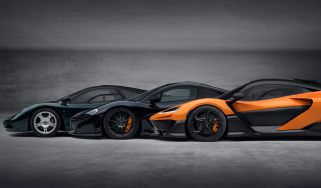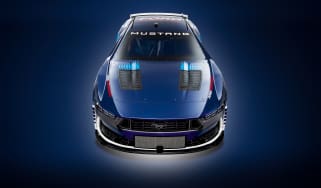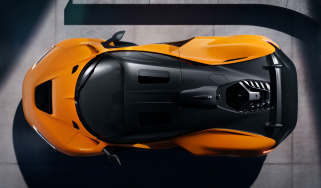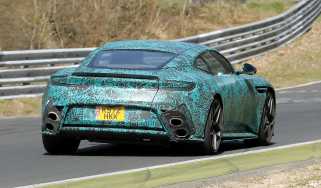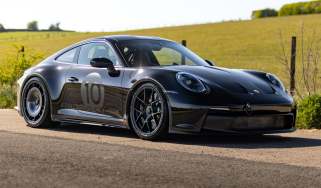McLaren V10 hypercar will race Ferrari, Porsche and Aston Martin at Le Mans
After years of speculation, McLaren has finally teased its top-level hypercar that will race at Le Mans in 2027

McLaren has announced it will finally be entering the Hypercar class in the World Endurance Championship for the 2027 season. The announcement follows speculation that’s been rife since the class was first announced in 2018, about the possibility of McLaren’s return to the fight for victory at Le Mans. Indeed, it’s well known that McLaren were one of the marques at the table helping to design the rule set.
Little is known about McLaren’s entry, though much to the surprise of fans, the announcement on social media did feature the car itself, albeit shrouded in darkness with its lights on, as well as a sound clip. That sound was not of a generic turbocharged V8 or V6 engine, as is the norm across most of the sprawling Hypercar grid. Rather, it was a dead ringer for a Judd V10, an engine that also features in the McLaren Solus GT track-only hypercar.
That’s not to suggest McLaren’s Le Mans entry will be Solus-based. For one, that car was not designed to conform to any road- or race-based rules or regulations. Its sliding canopy front screen for example, almost certainly would not be allowed. Then there’s what we can see of the car in McLaren’s teaser. Even with so little on display, the fact it has lights, that airbox, that rear wing, that windscreen – nothing about it is very ‘Solus’ at all.

What, beyond simply believing it to be the most effective solution, would motivate McLaren’s choice of the Judd V10? Key rival Ferrari utilised a version of its 296 GTB supercar’s V6 engine, for some synergy between the 499P and its distant road-going cousins. Could McLaren have not benefitted from forging a similar relationship, using the Artura’s V6? Well, the V10’s use in the Solus does mean McLaren has a reasonable understanding of the Judd engine and, as Aston Martin and Cadillac have proved, bringing better noises back to endurance racing gets you great PR.
Whether the car will use an existing LMDh platform, as the Porsche 963 and BMW M Hybrid V8 do, or be its own Hypercar, like Ferrari and Aston Martin’s entries, remains to be confirmed. Speculation has it that LMDh is indeed the direction the marque has taken, with Dallara as a chassis partner. From what we can see of the rear aero, it looks more uniformly LMDh, than a novel design that the LMH rules would allow.
> Ford will fight Ferrari at Le Mans once again in 2027
It’s expected that the car will be run by United Autosports, also owned by McLaren CEO Zak Brown. Brown has been notoriously cryptic when pressed about the possibility of McLaren’s return to endurance racing. Since the return of McLaren to WEC with the 720S GT3 Evo, his teases have become more prominent.
Speaking at the Qatar 1812KM in February, Brown said: ‘It would certainly be nice to see a couple of other McLarens also at the top of a different leaderboard… Le Mans is a must-attend. It’s a bummer it conflicts with the Montreal Grand Prix this year. But I can tell you, I’ll be in France, not Canada.’
With McLaren’s announcement of a 2027 entry, we can now reasonably expect that an initial concept of the car will be revealed at Le Mans in June, as McLaren also celebrates 30 years since the F1 GTR’s legendary 1995 win, on its first attempt.
> Genesis to take on Ferrari and Toyota at Le Mans
When the new McLaren Hypercars take to the track in 2027, they’ll be facing stiff competition. If the current grid holds, it’ll face off against Ferrari, Porsche, Toyota, Aston Martin, Alpine, Peugeot, BMW and Cadillac, in addition to both Genesis and Ford. McLaren is nothing if not ambitious, with Brown stating his aim to win the triple crown – the Indy 500, Le Mans 24 Hours, and the Monaco Grand Prix – in the same year.

